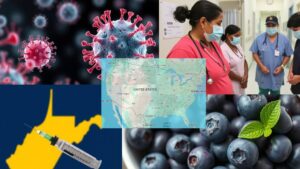Philadelphia is facing a devastating drug crisis with the rise of xylazine, a veterinary tranquilizer commonly referred to as “tranq.” This drug, which has infiltrated the city’s illicit drug supply, is wreaking havoc on communities, particularly in neighborhoods like Kensington. Known for its severe health effects and its role in escalating violence within the drug trade, xylazine has become a focal point of public health and law enforcement efforts.
What is Xylazine?
- Intended Use: Xylazine is an animal sedative approved for veterinary use but not for humans.
- Street Use: It is mixed into other drugs like heroin or fentanyl to prolong effects at a lower cost.
- Health Risks: Causes deep sedation, slowed breathing, and severe skin wounds that can lead to infections, necrosis, and amputations. Unlike opioids, it does not respond to naloxone (Narcan), making overdoses harder to reverse.
The Impact on Philadelphia
- Prevalence: By 2021, xylazine was found in over 90% of opioid samples tested in the city.
- Overdose Deaths: In 2021 alone, xylazine contributed to at least 434 fatal overdoses in Philadelphia.
- Physical Harm: Users frequently develop open sores and infections that require medical intervention. Many suffer amputations due to untreated wounds.
- Withdrawal Symptoms: Symptoms include violent shaking, salivation, vomiting, and severe agitation, making recovery especially difficult.
Kensington: Ground Zero
Kensington has become the epicenter of Philadelphia’s xylazine crisis:
- The streets are overwhelmed with unhoused individuals suffering from addiction.
- The area is described as a “containment zone” for drug use, with residents living among garbage and the stench of infection.
- Advocacy groups like Savage Sisters have been working tirelessly to raise awareness and provide aid to those affected.
Cartel Violence and Distribution
The rise of cheaper xylazine powder from Chinese suppliers has disrupted the drug trade:
- Cartel Control: Mexican cartels see the independent sale of Chinese xylazine as a threat to their monopoly and pricing structures.
- Violence: Reports indicate that gangs have been authorized by cartels to target anyone selling or using the cheaper version. This has led to murders and escalated tensions within Philadelphia’s drug trade.
Government Response
- Federal Action:
- The White House designated xylazine as an emerging national threat in 2023.
- Plans include funding for wound care and increasing access to drug testing strips specific to xylazine.
- State Measures:
- Pennsylvania classified xylazine as a Schedule III controlled substance in 2023. This allows stricter monitoring of its storage and distribution.
- Local Efforts:
- Philadelphia health officials are focusing on harm reduction strategies while balancing concerns about criminalizing users.
- Advocacy groups warn that heavy-handed enforcement could push users toward more dangerous substances.
Challenges Moving Forward
- Healthcare Gaps: Most treatment centers are designed for opioid addiction and lack protocols for managing xylazine withdrawal.
- Drug Evolution: Dealers may turn to new substances to bypass restrictions on xylazine.
- Public Health Strain: Without comprehensive solutions, communities risk further devastation from addiction-related issues.
Key Takeaways
- Health Risks: Xylazine causes severe skin wounds and does not respond to naloxone.
- Prevalence: Found in over 90% of opioid samples in Philadelphia.
- Cartel Violence: Murders linked to independent sale of Chinese xylazine.
- Government Actions: Federal funding proposals; Schedule III classification in Pennsylvania.
- Community Impact: Families disrupted; rising violence linked to distribution.
FAQs
Q: What is xylazine used for?
- A: Xylazine is primarily used as a veterinary sedative for large animals.
Q:Why is xylazine dangerous?
- A: It causes severe sedation, skin lesions, and does not respond to naloxone, making overdoses harder to treat.
Q: How widespread is xylazine in Philadelphia?
- A: By 2021, it was found in over 90% of opioid samples tested in the city.
Q: What are the withdrawal symptoms of xylazine?
- A: Symptoms include violent shaking, salivation, vomiting, and severe agitation.
Q: How are authorities responding to the xylazine crisis?
- A: Federal and state actions include funding for wound care, stricter scheduling, and increased access to drug testing strips.
Cartel Control and Violence Drive the Xylazine Crisis
The influx of cheap Chinese xylazine has sparked violent conflicts in Philadelphia’s drug market. Mexican cartels fiercely protect their control and see independent sellers as threats. To maintain dominance, they reportedly authorize gangs to use violence, including murder, against unauthorized dealers and users.
This violence reflects the cartels’ broader strategy to control drug trafficking routes and markets through intimidation and force. Without tackling this cartel-backed violence and supply chain, the xylazine crisis—and its deadly impact on communities—will continue unchecked.










